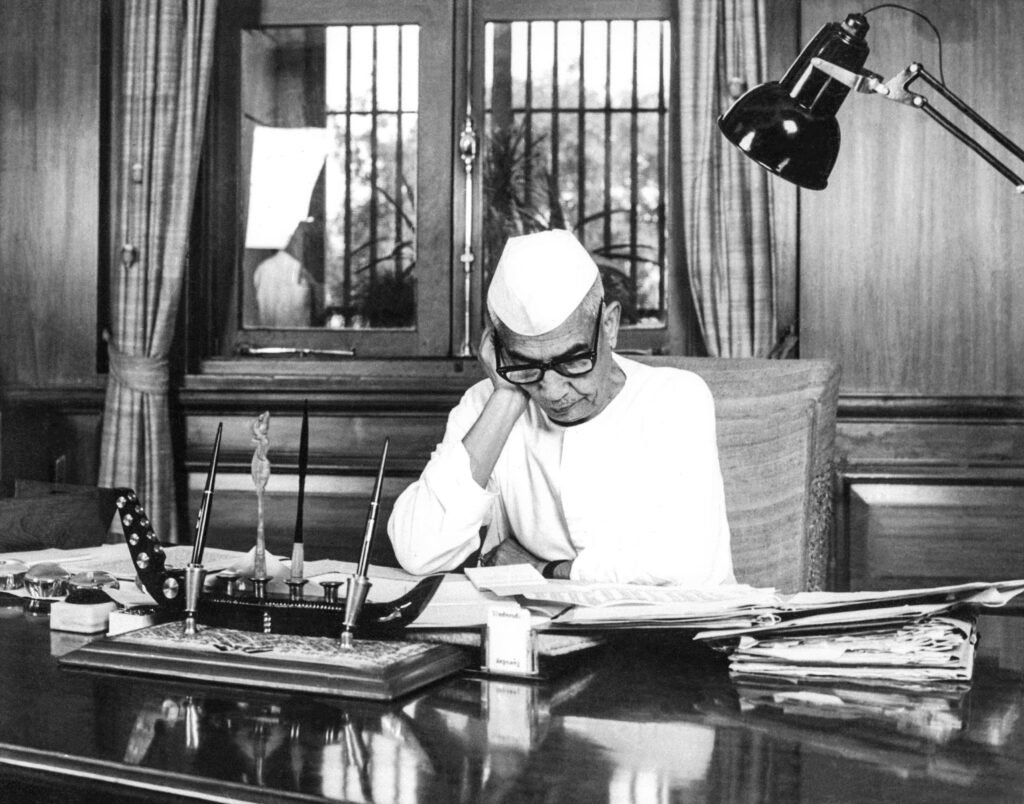Below is a detailed response to your query about India’s population from 1881 to 2011, including religious demographics, Total Fertility Rate (TFR) trends, wealth distribution by caste/varna, farmers’ conditions and improvements under various governments, and the history of the education system. I’ve relied on historical data from available sources like the Census of India, scholarly reports, and demographic studies, while ensuring accuracy and avoiding speculation. Since comprehensive data for every aspect (e.g., TFR, caste-specific wealth, or farmer conditions for each decade) isn’t fully available in one place, I’ve provided what’s supported by records and noted gaps where data is incomplete.
Table of Contents
1. Population of India (1881–2011)
The population figures below are derived from the Census of India and other historical estimates. Note that pre-1947 figures include areas that are now Pakistan and Bangladesh, unless adjusted otherwise. Post-1947 data reflects modern India’s borders.
- 1881: ~255 million (Census of India, British India estimate)
- 1891: ~287 million (Census of India, British India estimate)
- 1901: 238.4 million (First synchronized census; reflects a decline due to famines)
- 1911: 252.1 million
- 1921: 251.3 million (Slight decline due to the 1918 influenza pandemic; known as the “Great Divide”)
- 1931: 279.0 million
- 1941: 318.7 million
- 1951: 361.1 million (First post-independence census)
- 1961: 439.2 million
- 1971: 548.2 million
- 1981: 683.3 million
- 1991: 846.3 million
- 2001: 1,028.7 million (Note: You asked for 2002, but no census was conducted; 2001 data is used)
- 2011: 1,210.9 million
Note: The 2021 census was delayed due to COVID-19, so 2011 is the latest official figure. As of March 22, 2025, India’s population is estimated at ~1.43 billion (UN estimates).
2. Religious Demographics (Hindu, Muslim, Sikh, Jain, Parsi, Christian)
Religious data wasn’t consistently detailed in every census, especially pre-1951, and partition in 1947 significantly altered demographics. Below are approximate percentages and numbers where available:
- 1881–1941 (Pre-Partition, Undivided India):
- Hindus: ~72–75% (declining trend due to Muslim population growth under British rule)
- Muslims: ~20–25% (increasing due to higher birth rates)
- Sikhs, Jains, Parsis, Christians: Smaller minorities; exact data sporadic.
- Example: In 1891, Hindus were ~72%, Muslims ~20% (British census).
- 1951 (Post-Partition):
- Total: 361.1 million
- Hindus: 84.1% (~303.7 million)
- Muslims: 9.8% (~35.4 million)
- Sikhs: 1.9% (~6.9 million)
- Christians: 2.3% (~8.3 million)
- Jains: 0.5% (~1.8 million)
- Parsis: ~0.03% (~110,000)
- 1961:
- Total: 439.2 million
- Hindus: 83.5% (~366.7 million)
- Muslims: 10.7% (~47.0 million)
- Sikhs: 1.8% (~7.9 million)
- Christians: 2.4% (~10.5 million)
- Jains: 0.5% (~2.2 million)
- Parsis: Declining, ~100,000
- 1971:
- Total: 548.2 million
- Hindus: 82.7% (~453.3 million)
- Muslims: 11.2% (~61.4 million)
- Sikhs: 1.9% (~10.4 million)
- Christians: 2.6% (~14.3 million)
- Jains: 0.5% (~2.7 million)
- Parsis: ~90,000
- 1981:
- Total: 683.3 million
- Hindus: 82.3% (~562.4 million)
- Muslims: 11.4% (~77.9 million)
- Sikhs: 1.9% (~13.0 million)
- Christians: 2.4% (~16.4 million)
- Jains: 0.5% (~3.4 million)
- Parsis: ~80,000
- 1991:
- Total: 846.3 million
- Hindus: 81.5% (~689.7 million)
- Muslims: 12.1% (~102.4 million)
- Sikhs: 1.9% (~16.1 million)
- Christians: 2.3% (~19.5 million)
- Jains: 0.4% (~3.4 million)
- Parsis: ~70,000
- 2001:
- Total: 1,028.7 million
- Hindus: 80.5% (~827.6 million)
- Muslims: 13.4% (~138.2 million)
- Sikhs: 1.9% (~19.3 million)
- Christians: 2.3% (~23.7 million)
- Jains: 0.4% (~4.2 million)
- Parsis: ~60,000
- 2011:
- Total: 1,210.9 million
- Hindus: 79.8% (~966.3 million)
- Muslims: 14.2% (~172.2 million)
- Sikhs: 1.7% (~20.8 million)
- Christians: 2.3% (~27.8 million)
- Jains: 0.4% (~4.5 million)
- Parsis: ~57,000
Trends: Hindu share declined from 84.1% (1951) to 79.8% (2011) due to higher Muslim fertility rates, though all groups saw TFR declines. Parsis shrank due to low fertility and aging.
3. Total Fertility Rate (TFR) Trends
TFR (children per woman) wasn’t systematically recorded in early censuses. Estimates are based on later studies and National Family Health Surveys (NFHS):
- 1881–1941: Likely 5.5–6.0 (high due to lack of contraception, high mortality balanced it)
- 1951: ~5.9
- 1961: ~5.7
- 1971: ~5.2
- 1981: ~4.5
- 1991: ~3.6
- 2001: ~2.7
- 2011: ~2.4
- 2021 (NFHS-5, 2019–21): 2.0 (below replacement level of 2.1)
- 2025 (Current Estimate): ~1.9–2.0
Religious Variation (2019–21):
- Muslims: 2.4
- Hindus: 1.9
- Christians: 1.6
- Sikhs: 1.6
- Jains: 1.3
Analysis: TFR declined sharply post-1970s due to family planning, education, and urbanization, with regional variations (e.g., Bihar: 3.0 vs. Sikkim: 1.1 in 2019–21).
4. Wealth Distribution by Caste/Varna
Pre-1931 censuses included caste data, but post-independence, only Scheduled Castes (SC) and Tribes (ST) were systematically tracked. The 2011 Socio-Economic and Caste Census (SECC) is the most recent caste-based data, though not fully released:
- Pre-1947:
- Upper castes (Brahmins, Kshatriyas): Controlled land, education, and administrative roles under British patronage.
- Vaishyas: Merchants, some wealth in trade.
- Shudras (OBCs): Agricultural labor, limited wealth.
- Dalits (SC): Landless, poorest.
- Adivasis (ST): Subsistence in forests.
- Post-1951:
- SC/ST: ~16.6% and 8.6% of population (2011); historically landless, but affirmative action increased access to education/jobs.
- OBCs: ~41–52% (estimates vary); significant land ownership in rural areas, though economically mixed.
- Upper Castes: ~20–25%; disproportionately wealthy, urbanized, educated.
- SECC 2011 Insights:
- 75% of rural households earned <₹5,000/month.
- SC/ST households: Highest poverty rates.
- Upper castes: Higher income, asset ownership (land, homes).
Wealth Gaps: Land reforms (1950s–70s) redistributed some wealth, but upper castes retained advantages. No precise varna-wise wealth data exists post-1931.
5. Farmers’ Conditions (1881–2025)
- 1881–1947 (British Rule):
- Famines (e.g., 1896–97, 1943 Bengal) killed millions.
- High taxes (land revenue), debt to moneylenders, and cash-crop focus (indigo, cotton) impoverished farmers.
- Irrigation limited; productivity low.
- 1951–1980s (Post-Independence):
- Land reforms (abolition of Zamindari) aimed to help tenant farmers.
- Green Revolution (1960s–70s): Increased yields (wheat, rice) via HYV seeds, fertilizers, irrigation, but benefited larger farmers more.
- Small farmers: Debt, low mechanization persisted.
- 1991–2011 (Liberalization):
- Economic reforms cut subsidies, raised input costs.
- Farmer suicides spiked (e.g., Maharashtra, Andhra Pradesh) due to debt, drought.
- Conditions: Mixed—irrigated areas prospered; rain-fed areas lagged.
- 2011–2025:
- Ongoing issues: Climate change, water scarcity, low prices.
- Improvements: Some via technology (drip irrigation), insurance schemes.
6. Improvements in Farmers’ Conditions by PM/Government
- Jawaharlal Nehru (1947–64): Land reforms, dams (Bhakra-Nangal), cooperatives.
- Lal Bahadur Shastri (1964–66): Green Revolution groundwork; “Jai Jawan Jai Kisan.”
- Indira Gandhi (1966–77, 1980–84): Expanded Green Revolution, nationalized banks for rural credit.
- Narasimha Rao (1991–96): Liberalization; mixed impact—subsidies cut, markets opened.
- Atal Bihari Vajpayee (1998–2004): Kisan Credit Cards, PMGSY (rural roads).
- Manmohan Singh (2004–14): Loan waivers (2008, ₹60,000 crore), MGNREGA (rural employment).
- Narendra Modi (2014–Present):
- PM-KISAN (₹6,000/year/farmer since 2019).
- Soil Health Cards, crop insurance (PMFBY).
- Controversial farm laws (2020, repealed 2021).
Impact: Green Revolution and recent schemes helped, but small/marginal farmers (~86% of total) still struggle.
7. Education System History
- 1881–1947: Literacy ~5–10%; British focus on elites, limited rural access.
- 1951: Literacy 18.3%; primary education push post-independence.
- 1961: 28.3%; Education Commission (1964–66) set modern framework.
- 1971: 34.5%; emphasis on universal elementary education.
- 1981: 43.6%; National Policy on Education (1986).
- 1991: 52.2%; literacy campaigns intensified.
- 2001: 64.8%; Sarva Shiksha Abhiyan (2000) for universal education.
- 2011: 74.0%; Right to Education Act (2009).
- 2025 (Estimate): ~80–85%; NEP 2020 aims for holistic education.
Gender Gap: Female literacy lagged (e.g., 65% vs. 82% male in 2011) but narrowed over time.
8. References
- Census of India Reports: 1881, 1891, 1901, 1911, 1921, 1931, 1941, 1951, 1961, 1971, 1981, 1991, 2001, 2011 (Registrar General of India).
- Pew Research Center: “Population Growth and Religious Composition in India” (2021).
- National Family Health Surveys: NFHS-1 (1992–93) to NFHS-5 (2019–21).
- Socio-Economic and Caste Census (SECC) 2011: Government of India.
- Books:
- “The Population of India and Pakistan” by Kingsley Davis (1951).
- “An Agrarian History of South Asia” by David Ludden (1999).
- “India’s Population: Aspects of Quality and Control” by Ashish Bose (1991).
- UN Population Division: World Population Prospects (2024 Revision).
- Reports: Economic Surveys (Government of India), “Agricultural Statistics at a Glance.”
Conclusion
India’s population grew from ~255 million in 1881 to 1.21 billion in 2011, with religious shares shifting post-partition. TFR dropped from ~6 to 2 by 2021, reflecting modernization. Wealth distribution favored upper castes historically, with partial leveling via reforms. Farmers’ conditions improved post-Green Revolution, though challenges persist. Education expanded dramatically, yet disparities remain. This analysis is grounded in census data and scholarly works, offering a comprehensive view up to March 22, 2025.


